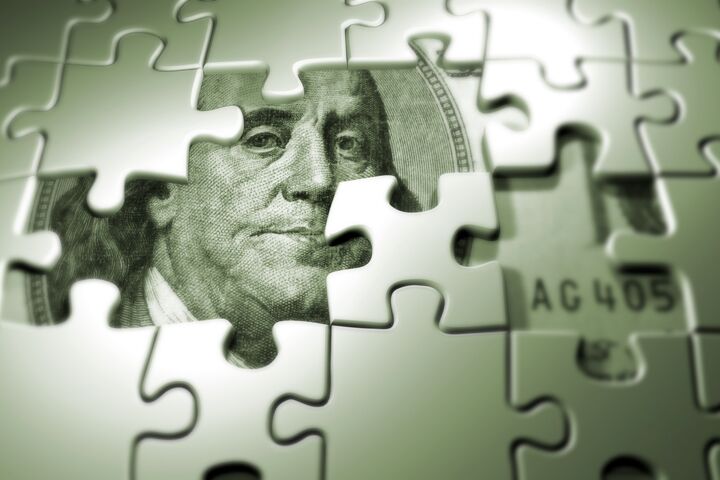
Which Way Will the Dollar Go in 2010?
Since November, the dollar has surged in value. It has gone up 5.6 percent in just over one month. Has the economy returned to health and is America on the road to recovery? Or is something else going on?
“The dollar is rallying in tandem with stocks and commodities for the first time since before Lehman Brothers Holdings’ bankruptcy last year sparked the financial crisis,” writes the Economic Times. It signals that “the worst may be over for the greenback” (December 22).
The dollar’s recent rise is the fastest in 10 months. And if you were going to travel to Canada or Australia, it would be a welcome advent. However, this rally doesn’t seem too different from past ones. If you look at the big picture, the dollar is still a far shot from its much higher value of just a few months ago. The dollar has fallen over 12 percent from its peak in March, and is down more than a third from its peak in 2001.
From a historical perspective, the dollar has lost approximately 95 percent of its value since the creation of the Federal Reserve in 1913.
But the big question on people’s mind now is, where to next?
China’s central bank says down. It is becoming more difficult for governments to support the value of the dollar, warned a Chinese central bank official on Friday. Constricting global trade will slowly strangle the greenback. Zhu Min, deputy governor of the People’s Bank of China, said that since Americans are purchasing fewer imports, the world is earning fewer dollars. This is reducing the supply of dollars held overseas. Thus foreign governments will not be recycling as many dollars into U.S. treasuries.
Since the U.S. government has announced that it will attempt to borrow the largest amounts of money in history over the next few years, the international dollar shortfall could be a huge complication for the U.S. government. Where will America find the money to cover its deficit spending?
“The United States cannot force foreign governments to increase their holdings of treasuries,” Zhu said. “Double the holdings? It is definitely impossible.”
It is therefore inevitable that the dollar will continue to fall in value, he said.
Earlier this month, China’s State Administration of Foreign Exchange reaffirmed that even though it is lessening its dependence on the greenback, the dollar will remain a secure anchor of China’s currency reserves.
Yet, even as the Central Bank of China predicts a continuation of the dollar’s decline, there is the growing possibility that the dollar could rally in 2010.
In the search for greater return, investors are lending massive amounts of money to local administration coffers. A record $55 billion has poured into municipal bond funds this year, according to Bloomberg. Many other investors are buying city, county and state bonds outright.
State and local debt obligations total more than $2.6 trillion. But it is money that many state and local governments won’t be able to repay.
According to Robert Prechter, president of Elliott Wave International, these investors are setting themselves up for a massive fall. When you consider unfunded and underfunded pension liabilities ($1 trillion worth according to Moody’s), plummeting tax receipts and rising unemployment, the ability of local governments to continue paying the bills is sure to drastically deteriorate.
The only reason that states haven’t failed yet is the so-called stimulus package in which Washington doled out billions in federally borrowed money to help states keep paying the bills. “But political pressures will eventually cut off this gravy train,” warns Prechter. “In the 2010-2017 period, the muni bond market will become awash in defaults.”
If the municipal bond market does melt down, it is possible investors could turn to U.S. treasuries as a safer alternative. So ironically, the extra demand for U.S. treasuries could firm up the dollar’s value over the short term, even as America’s cities increasingly go bankrupt. A similar event occurred during 2008. When the stock market plummeted, investors sought the perceived safety of U.S. treasuries, which bumped up the value of the dollar.
But with America’s federal debt skyrocketing, it is also possible that investors may look for alternative non-U.S.-based investments altogether.
Either way, a municipal bond market massacre will not be good for the economy.
The danger of debt addiction is becoming manifest in America. All levels of society are addicted. When the lenders cut back, the debts will still have to be paid, and consequently America’s standard of living will have to be drastically downgraded to make the payments.
So which direction will the dollar go? Over the short term anything is possible, but the 107-year track record is down. There is nothing to suggest that will change. Despite temporary up-ticks, economic conditions in America continue to get worse.
Yet despite America’s financial problems, you can prosper in a recession. Read The Seven Laws of Success by Herbert W. Armstrong for ways to revolutionize your career and your life.
